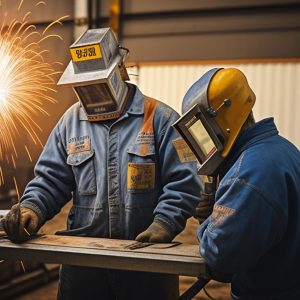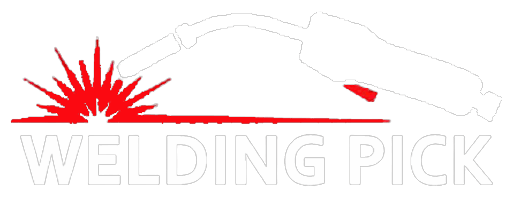Welding is a fundamental process used in various industries to join metal components together. Whether it’s constructing buildings, manufacturing machinery, or creating intricate metalwork, welding plays a pivotal role in creating durable and robust structures.
While welders focus on the welding techniques, materials, and equipment, there’s a crucial element that often goes unnoticed but significantly impacts the welding outcome: the “diem” (also known as a welding jig or fixture).
The purpose of this article is to shed light on the importance of diems in the welding process, exploring their functions, types, and the advantages they bring to the table.
Table of Contents
What is a Diem?
A diem is a specialized tool or device used in welding to hold the workpieces in place during the welding process. Essentially, it acts as a guide and support system for the welder, providing a stable and accurate setup for welding operations. The primary function of diems is to ensure that the components being welded are aligned correctly and maintain their desired position and shape throughout the process.
Imagine a welder trying to hold two pieces of metal together with one hand while attempting to weld them with the other. It would be a cumbersome and impractical task, not to mention the high likelihood of misalignment. Diems eliminate this challenge by providing a dedicated holding and alignment solution, making the welding process more efficient and accurate.

Types of Diems in Welding
Diems come in various types, each designed for specific welding applications. Here are the most common types of diems used in welding:
Locating Diem
The locating diem is the initial setup tool used to position the workpieces before welding. It ensures that the components are in the correct place and aligned accurately according to the welding plan. By using locating diems, welders can achieve precise welds without worrying about misalignment issues.
Clamping Diem
Clamping diems are crucial for holding the workpieces firmly in place during the welding process. They apply pressure to the components, preventing any unwanted movement that could compromise the quality of the weld. Clamping diems are particularly useful when dealing with larger or heavier workpieces that might shift during the welding operation.
Resting Diem
Resting diems provide support to the workpieces while they are being welded. As the name suggests, they act as a resting surface, preventing the workpieces from sagging or deforming due to the welding heat. This is especially important when welding long or thin components that might bend under their weight or heat stress.
Vee Diem
Vee diems are specialized diems used for butt welds, where two pieces of metal are joined together in a square or rectangular shape. These diems create a V-shaped groove between the workpieces, allowing the welder to achieve full penetration and a stronger joint.
The Importance of Diems in Welding
Accuracy and Consistency
One of the primary advantages of using diems in welding is the accuracy and consistency they bring to the process. Diems ensure that the workpieces are precisely aligned as per the welding plan, eliminating the potential for human errors and variations that might occur when welding freehand. This results in consistently high-quality welds that meet industry standards and safety requirements.
Enhanced Efficiency
By providing a stable and reliable setup, diems contribute to enhanced efficiency in the welding process. Welders can focus on the welding technique and ensuring proper weld bead formation without constantly checking and adjusting the position of the workpieces. This efficiency translates to faster completion of welding tasks and reduced production time.
Weld Quality
Diems significantly impact the overall quality of welds. Well-aligned workpieces result in strong and reliable welds that can withstand various stresses and loads. Welds created using diems exhibit better fusion, improved mechanical properties, and reduced chances of defects such as porosity or lack of fusion.
Designing Custom Diems
While off-the-shelf diems are readily available, not all welding projects can be accommodated with standard tools. Custom diems are designed to suit specific project requirements, accounting for unique workpiece dimensions and welding configurations.
Experienced welders or welding experts are often involved in the design process, assessing the welding plans and workpiece specifications to create tailor-made diems. Custom diems ensure optimal alignment, better control over the welding process, and ultimately lead to superior weld quality.
The Role of Skilled Welders
Although diems play a significant role in achieving accurate welds, the expertise and skills of welders are equally crucial. Skilled welders must interpret the welding plans, select the appropriate diems, and operate welding equipment expertly.
Welders also need to ensure that the diems are correctly set up and securely fastened to prevent any movement during welding. Their ability to manage the welding process, including heat control, travel speed, and welding technique, complements the advantages of using diems.
Conclusion
In conclusion, diems are invaluable tools in the welding process, providing precise alignment, stability, and support to workpieces. They contribute significantly to the quality, efficiency, and overall success of welding projects. Properly designed and utilized diems result in strong, reliable welds that meet industry standards and customer expectations.
Custom diems, designed with the expertise of experienced welders, offer the best solution for unique welding projects. While diems enhance accuracy and efficiency, it is the skills and knowledge of welders that bring life to these tools, creating exceptional welds that stand the test of time.
FAQs
Can diems be used for all types of welding?
Yes, diems are versatile tools suitable for various welding processes, including MIG, TIG, and arc welding.
Are diems only used in industrial settings?
While diems are commonly employed in industrial welding, they can also be utilized in smaller-scale projects and even in hobbyist welding.
How can I ensure I select the right diem for my welding project?
Consulting with experienced welders or welding experts can help you choose the appropriate diem for your specific project requirements. They will consider factors like workpiece dimensions, welding method, and joint configuration to recommend the most suitable diem.
Can diems be reconfigured for different projects?
In some cases, diems can be adjusted or modified to suit different welding tasks, especially if they share similar workpiece dimensions or joint configurations. However, custom-made diems are often recommended for unique projects to ensure the best possible alignment and weld quality.

